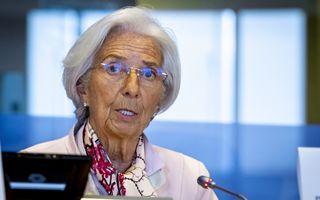(Finance) – “The latest information on inflation indicates that “the disinflationary process is well underway.” The inflation outlook “is also influenced by recent downward surprises in economic activity indicators”. At the same time, “financing conditions remain restrictive”. The president of the ECB said it, Christine Lagarde at a press conference in Ljubljana, after yesterday’s widely awaited decision by the European Central Bank, to cut rates by 25 basis points.
The ECB will continue “following a data-driven approach, in on the basis of which decisions are defined from time to time at each meeting. And the decision taken today is precisely one of these cases”, added Lagarde, reiterating the attitude she has held so far.
As expected, the ECB remained cautious and gave little indication of its next steps, with Lagarde stressing that the central bank will remain “data-dependent and will follow a meeting-by-meeting approach,” she stressed. Nadia Gharbi, Senior Economist at Pictet Wealth Management explaining that “the decision to cut by 25 basis points was cited as “proof” of the ECB’s dependence on data”.
In particular, although not committing itself in any way, the Lagarde did not rule out a more rapid rate cutoe highlighted the importance of staff projections and upcoming data that will be released in the coming weeks. Overall, the focus in December will be on reviewing staff projections. We maintain our view that the ECB will cut by 25 basis points at each Governing Council meeting until June 2025, bringing the deposit rate to 2.0%. The risks are tilted towards a lower final rate.
“Although the ECB rate cut was widely expected, European stocks rose and short-term rates fell, supported by highlighted downside risks to growth and inflation. Also in the UK and the US United States, the easing cycle is supported by the disinflation process”, he notes Nicolas Forest, CI from Candriam.
Although the supportive policies implemented by China and the latest ECB bank lending survey may offer some boost, “the German economy is contracting, the manufacturing sector is struggling and the US elections are getting closer. A risk trade tariffs are negative for the European economy, as its trade openness makes the euro vulnerable to global growth.”
Future monetary policy decisions “will be influenced by incoming data and quarterly macroeconomic projections and we expect another cut in December.”
“Everything as widely expected by the ECB. The message has remained essentially unchanged: dependence on data and a “meeting by meeting” approach, he also underlinesand Sandra Rhouma, European Economist by AllianceBernstein.
President Lagarde underlined that the only discussion was between a reduction of 25 bps or a pause in cuts. In other words, a larger maneuver (50 bps cut) was never considered. However, the latest statement shows undeniable dovish signals compared to September, reflecting the increase in negative risks to growth and inflation. President Lagarde, despite her efforts, has failed to appear hawkish.
“We expect the ECB to cut at every meeting until June. This represents a risk compared to our previous basic thesis of a return to quarterly cuts in the first half of the year. However, the information available so far, with stable inflation decline and a fiscal policy that will not be so aggressive in supporting growth, suggest an acceleration in cuts”.
Obviously, “we must also consider the upside risks (geopolitical and commercial tensions, stronger recovery in consumption and inflation) which could lead to a pause in January. But at this stage they remain marginal. Our new reference scenario is therefore in line with current market forecasts, which foresee another 5 cuts and a deposit rate of 2% by June 2025”.
“Looking ahead, given the very weak explanation for today’s decision to cut rates, it appears that the ECB has not yet decided what to do. With the current negative momentum of the eurozone economy, however, we see a weaker trajectory than the one predicted by the Bank. If we are right, this means that the ECB will continue to cut rates,” he says Carsten Brzeski, Global Head of Macro at ING
We now know that having only a little more data “no longer represents an obstacle to cutting rates. Even if Christine Lagarde and her team avoid providing forward guidance, it appears that the Bank has moved from rate cuts linked to new macro projections every quarter to consider them at each S meetingIt appears that the objective is to bring interest rates back to neutral levels as quickly as possible.”
